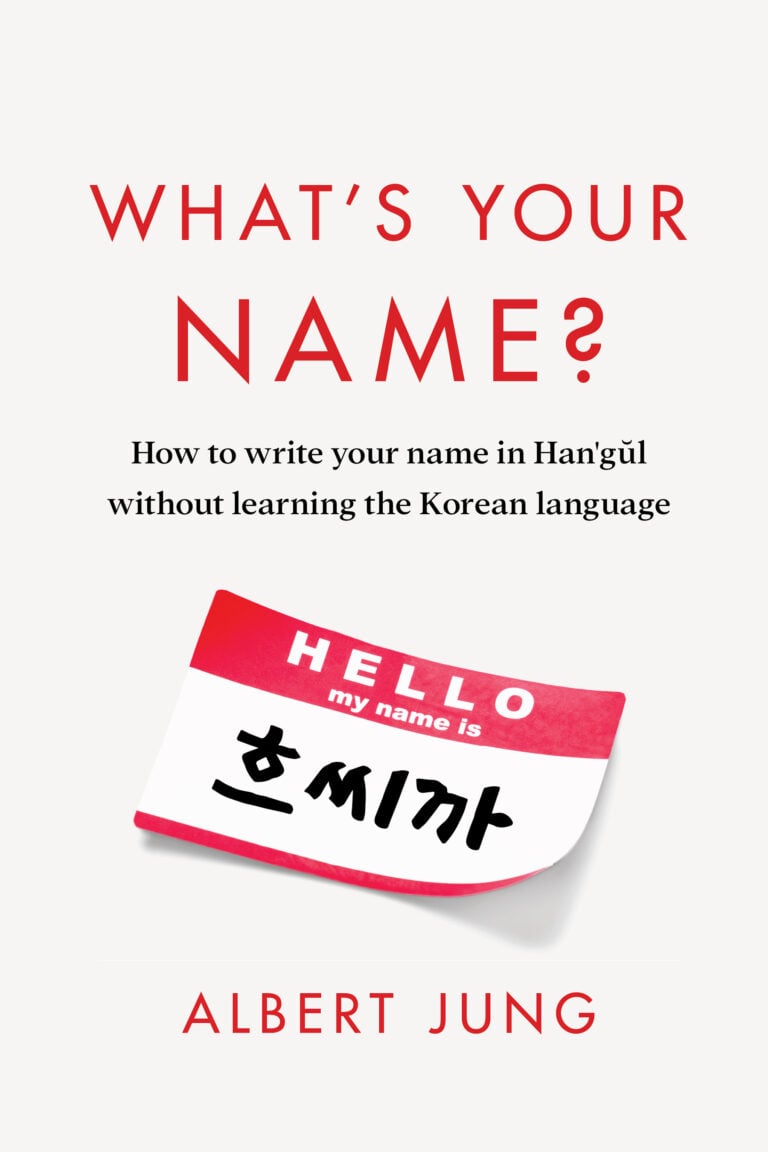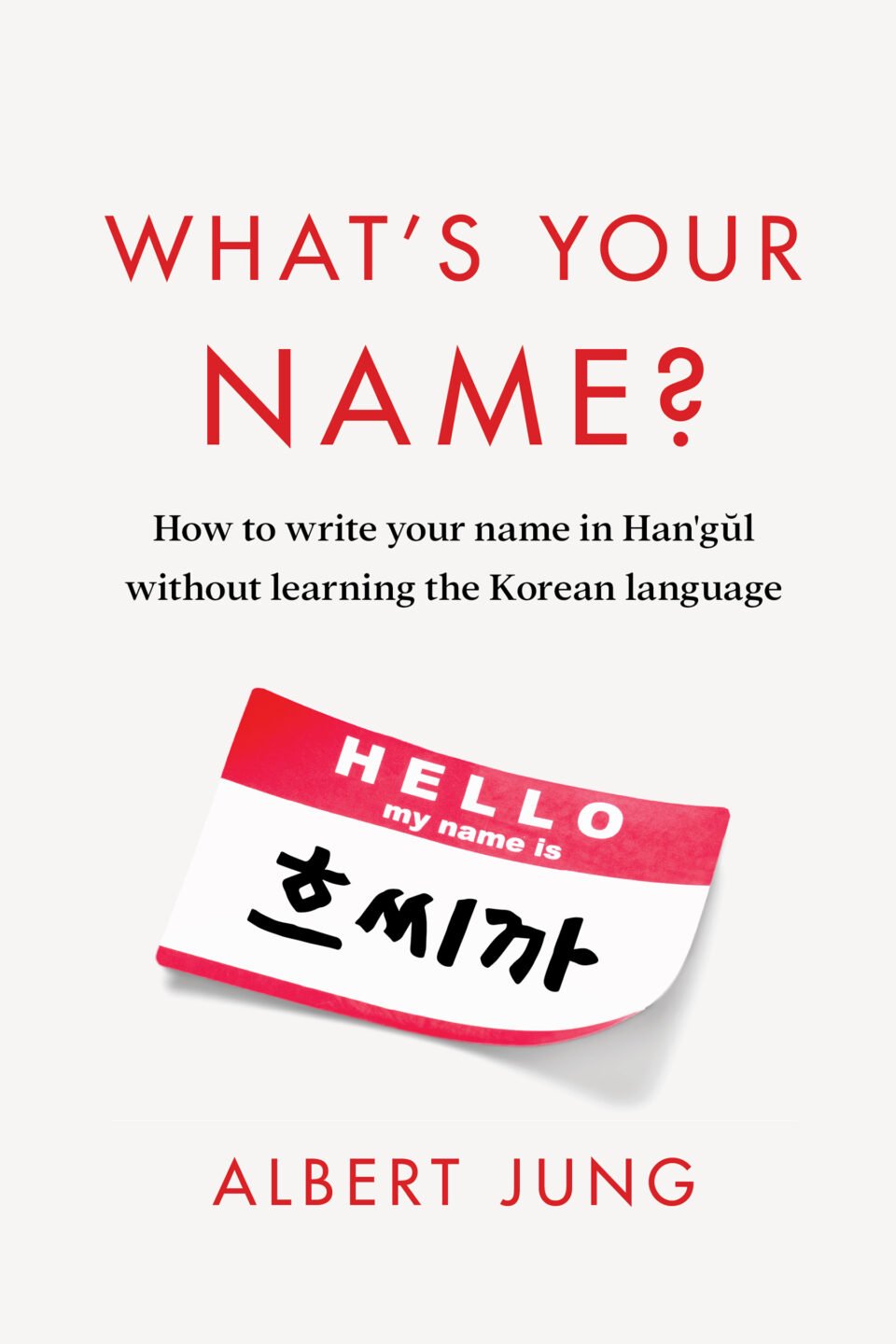Albert Jung’s WHAT’S YOUR NAME? How to Write Your Name in Han’gŭl Without Learning the Korean Language offers a remarkably practical approach to using Han’gŭl—the Korean writing system—without requiring readers to learn the Korean language itself. This unique guide fills a specific niche: helping people accurately transcribe names and pronunciations across language barriers using a script specifically designed for phonetic precision.
Jung structures the book in three sections that build logically upon each other. The first part introduces modern Han’gŭl with its streamlined 24 letters, breaking down how the system divides sounds into top (consonants), middle (vowels), and bottom (final consonants). His explanations are refreshingly straightforward, making abstract concepts tangible through visual aids and numerous examples across multiple languages. Readers will appreciate the succinct presentation of how Han’gŭl combines these elements to form characters that represent spoken sounds.
Jung integrates “Quiz for Fun!” sections throughout, allowing readers to immediately apply what they’ve learned by identifying names written in Han’gŭl. These exercises offer just the right level of challenge while reinforcing the material through practical application. The inclusion of names from English, French, German, Spanish, and Russian demonstrates the system’s versatility while highlighting potential challenges in transcribing sounds absent from Korean.
The book’s second section on 15th-century Han’gŭl expands the toolkit, introducing the original 28-letter system that offers solutions to modern Han’gŭl’s limitations. Jung’s explanations of “soft” lip sounds for v and f, specialized tooth sounds for sh, j, ch, and z, and characters for r and ng sounds are particularly valuable for those struggling with accurate transcription of non-Korean names. The comparative tables between modern and 15th-century Han’gŭl provide a useful reference that clearly shows which version might better serve specific pronunciation needs.
Perhaps most innovative is the “Multiverse Han’gŭl” section, where Jung extends the system’s principles to address persistent gaps. His proposed notations for the sounds and consecutive vowel sequences solve real problems that readers might encounter when writing names like “Elizabeth” or words with diphthongs. These practical workarounds demonstrate Jung’s deep understanding of both Han’gŭl’s design principles and the phonetic challenges of cross-language transcription.
What distinguishes WHAT’S YOUR NAME? from typical language guides is its singular focus on practical transcription, rather than language learning. Jung repeatedly emphasizes that readers needn’t understand Korean to use Han’gŭl effectively, making this system accessible to anyone interested in accurate pronunciation across language barriers. The book delivers precisely what it promises: a method to write names in Han’gŭl without learning Korean.
For international professionals, travelers, language enthusiasts, or anyone who values precise pronunciation of names, WHAT’S YOUR NAME? provides a unique and valuable tool. While it requires some initial effort to learn the system, Jung makes the process as painless as possible through clear explanation, abundant examples, and practical exercises. Anyone who has struggled with having their name mispronounced—or with correctly pronouncing others’ names—will find in this book a practical solution to a persistent communication challenge.
Albert Jung’s WHAT’S YOUR NAME? How to Write Your Name in Han’gŭl Without Learning the Korean Language transforms the Korean writing system into a universal tool for accurate name transcription, offering three increasingly sophisticated approaches to Han’gŭl that privilege precision without requiring Korean language knowledge. Methodical instruction paired with thoughtful cultural context makes this an essential resource for anyone seeking to bridge pronunciation gaps across languages.
~Edward Sung for IndieReader


